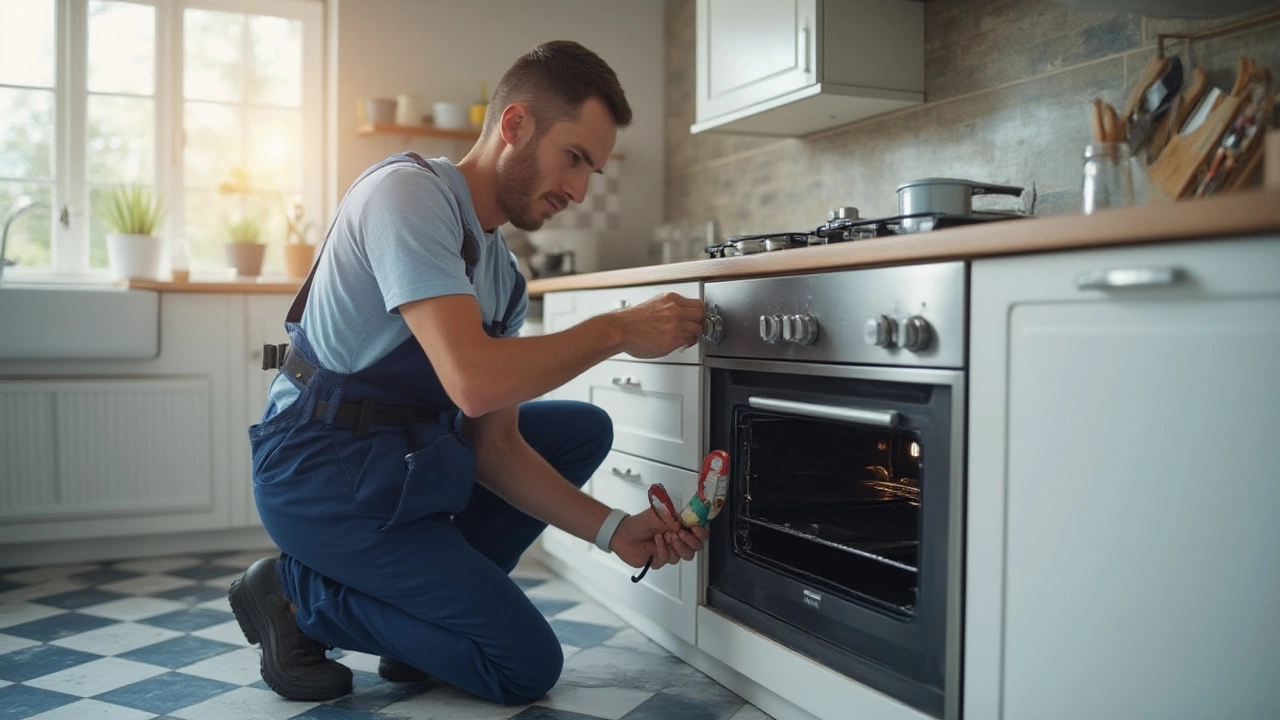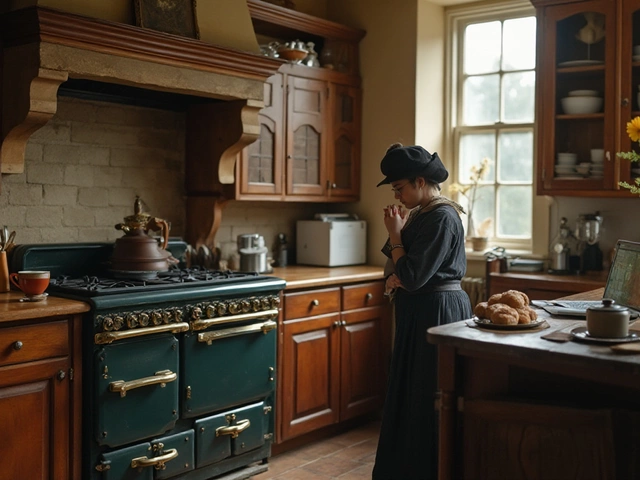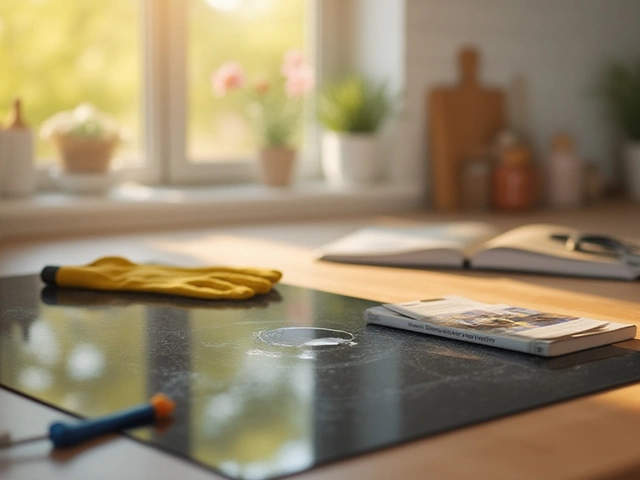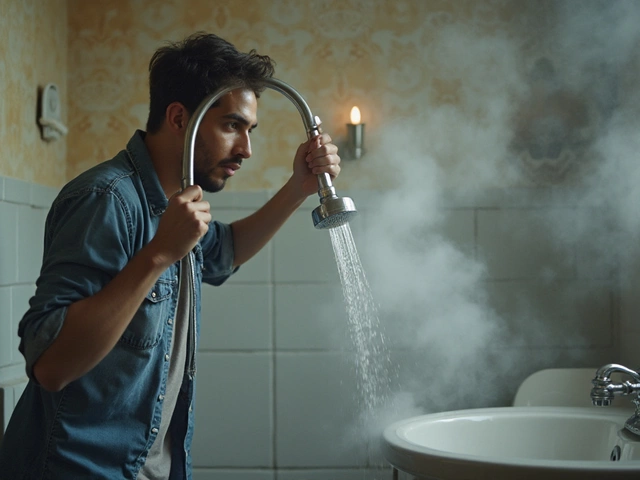You've probably heard at least one story about someone frying their kitchen playlist or tripping the whole house power just trying to install a new oven. Electric ovens seem pretty harmless in the showroom, but swap one yourself without thinking things through, and you could face more than burnt lasagna. So, do you really need an electrician to replace an electric oven, or can a weekend warrior handle it?
Why Oven Replacement Isn’t Like Changing a Lightbulb
If you're picturing yourself wheeling out the old oven and sliding in the new one, plugs and all, real life throws a wrench in that fantasy real quick. Most electric ovens are hard-wired directly into your home's electrical supply. You won't find a standard three-prong outlet—it's usually a hefty 30-amp circuit hooked up right to the breaker panel. These circuits are beefy for a reason: ovens eat up a ton of power, sometimes running at 240 volts. Mistake the wiring, and you risk fire, dangerous shocks, or permanent damage to your fancy new appliance.
Modern ovens often come with color-coded wiring: black and red for live connections (in North America), white for neutral, and green or bare copper for ground. Mix these up or leave something loose, and things can go south before you even preheat. If your house was built before the 1970s, wiring standards could be a whole different beast—think aluminum wires, no ground, or the kind of insulation that crumbles if you look at it wrong. That’s why most manufacturers require a professional for installation to honor the oven's warranty.
Ever heard of local permit rules? In many cities, a homeowner is legally required to use a licensed electrician for any work involving a hard-wired appliance. If you ever want to sell your house, home inspectors will check for proper oven installation; failure to show a permit or pro job can ruin a sale or cause your house insurance to deny a claim if something happens. In the UK and Australia, oven hook-ups are strictly considered 'notifiable' work—only licensed electricians can legally touch those circuits.
Even experienced DIYers get tripped up by the mess of wire gauges, breaker ratings, and oven amperage. An incompatible oven and breaker pairing is a recipe for nuisance tripping at best or a full-blown fire at worst. Some double ovens even require separate circuits or higher amperage wiring than a single unit. The part no one tells you: kitchen appliance fires spark more house fires than any other source of domestic electrical blaze, according to the U.S. Fire Administration.
Then there's the wall cavity itself. Did you know many modern ovens have increased in width or depth slightly compared to older models, especially with insulation or smart-tech modules? That can mean extra cutting, patching, or electrical cable extension inside the wall—stuff that's illegal to DIY in a lot of places. So if you're considering replacing an oven yourself, you really need to know your local regulations and your home’s exact wiring setup, not just grab a screwdriver and hope for the best.
When You Need an Electrician for Oven Replacement
The bottom line: any time you're dealing with a hard-wired oven (most built-in models, wall ovens, and even some slide-in ranges), calling an electrician isn't just smart—it's sometimes a legal requirement. Here’s when calling in a pro is a must:
- You find no large outlet, just a junction box or a fixed cable coming out of the wall.
- You’re replacing an old oven with a new one that has different power requirements. For example, shifting from a plug-in 20-amp to a 30-amp hardwired model.
- Your home's wiring is old, suspect, or recently remodeled, and you can’t confirm the size or condition of circuits. Aluminum wires? That’s a red flag.
- You live in a region or country with specific electrical codes requiring licensed installation or permits (hello, EU and Aussie readers!).
- Your oven’s manufacturer and/or your home insurance require a certified electrician for warranty and coverage purposes (check those booklets, they’re serious).
Imagine trying to pass an electrical inspection for insurance after a kitchen fire, only to be asked for proof of a licensed install. Not worth the stress or risk. If your oven is under warranty, manufacturers generally turn down claims for electrical faults if the installer wasn’t certified. Also, most electricians spot hidden problems—like damaged or mismatched cables—that could future-proof your kitchen for years.
Curious about the cost? On average, hiring an electrician in the US to replace an existing electric oven costs between $120-$400, with prices shooting higher if wiring upgrades or new circuits are needed. When kitchens are remodelled, the costs can rise—if the electrical panel is at capacity or the oven's circuit doesn’t meet modern protection standards like GFCI or AFCI, which prevent electrical shocks and fires. In some cases, a direct oven swap without changes can be quick and affordable, but always get a quote first.
Yes, it’s tempting to skip the pro and save a few bucks, especially with YouTube making everything look simple. But if anything looks or feels off—frayed cables, scorched junction boxes, mismatched wiring—it’s time to back away and call the expert. Even seasoned DIYers don’t mess around when it comes to 240-volt power running headlong into your favorite remodel project. Safety always wins.
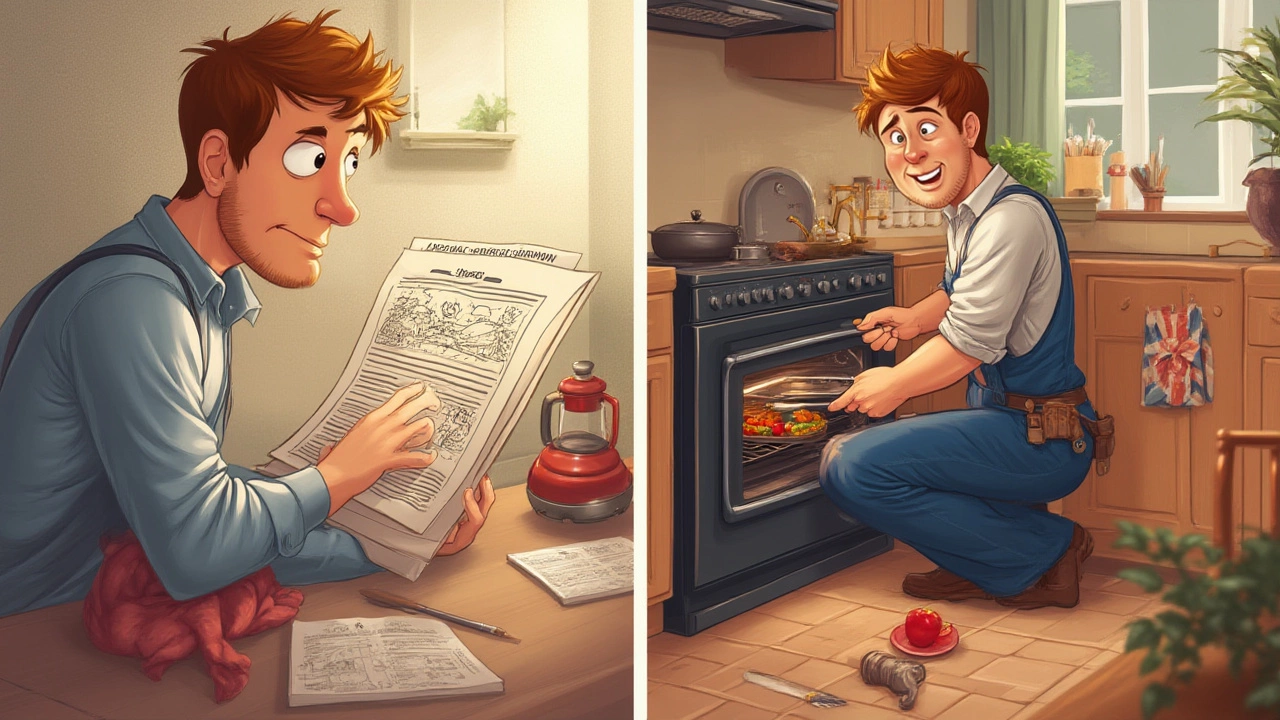
DIY Swaps: When Is It Actually Safe and Legal?
Not every oven replacement calls for a permit and a pro. If you live somewhere ovens plug right into a wall socket, swapping units is about as tricky as replacing a fridge. Some older or compact European homes still use dedicated high-power outlets, where a simple plug-and-play swap is possible. But even here, you want to check a few things before you start flexing your DIY muscles:
- Double check the oven’s voltage and amperage rating. The new oven needs to match the circuit or plug amp rating—usually 30 or 40 amps in North America, sometimes 16 amps in Europe.
- Make sure the wall socket isn’t scorched, cracked, or unstable. Overheating outlets are a sign of bad wiring or old connections. No oven should ever feel loose in the plug.
- If your model is hardwired, check your local codes. In places like California or the UK, it’s illegal to install or rewire hardwired appliances unless you’re licensed, regardless of your skills.
- Before disconnecting any hardwired appliance, always kill power at the breaker and use a voltage tester to triple-check everything’s dead. Even experienced techs get zapped by hidden live wires.
- If disconnecting a hardwired oven, take photos of all wire connections before anything moves—you’ll thank yourself later. Label wires with painter’s tape for extra clarity.
- If you see any sign of wire damage, outdated wiring (like cloth insulation), or questionable connections, stop. Call a pro. Fires often start from tiny mistakes.
Some big appliance stores offer installation deals if you buy a new oven through them. It might look like an upsell, but often these services are either free or discounted and come with added peace of mind—installers are certified to local standards and provide documentation for warranties and insurance.
If you insist on a DIY swap and your home allows it, here’s a quick idea of the process:
- Shut off power at the main breaker to the oven’s circuit.
- Move the old oven out, disconnecting wires or plug from the socket.
- Prepare the new oven by matching wiring to what’s in the wall. Attach matching colors: black/red (hot/live), white (neutral), green/bare (ground).
- Tighten all connections with the right torque (not just hand tight—you need a good hold to prevent arcing or loose terminals).
- Mount the oven, double-check clearances, and secure it to prevent tip-overs.
- Turn the power back on and test every function of the oven—bake, broil, timer, display. Smell for any burning, and check panel breakers for tripping.
Even with these steps, you skip out on the inspection, paperwork, and safety tests a pro provides. If there’s the slightest doubt about what you’re doing or about your home’s wiring, step aside and call an expert—the risks are nowhere near worth the short-term saving.
Hidden Perks of Calling a Pro (And What Can Go Wrong Without One)
Electricians do more than just connect a bundle of wires. When you book a pro, you get a full inspection of existing circuits, safety checks, and sometimes a heads-up on small problems—like outdated breakers or signs of corrosion—that you might miss entirely. Great electricians can spot code violations, identify mismatched or overheating wires, and even predict how your oven could behave on old circuits, especially if your house has seen a lot of DIY work in the past.
Some pros use voltage drop meters to check that your new oven won’t lose performance to undersized wiring—something that’s almost impossible to check without specialized tools. Some even use non-contact infrared thermometers to spot overheating connection points after the first test bake. That means fewer callbacks, fewer tripped breakers, and the confidence that your new oven is dialed in for the long haul.
Then come the unexpected headaches: a broken or missing earth (ground) wire, poorly routed cables sharing space with plumbing, or wall cavities stuffed with insulation that’s caught fire before. These things don’t show up in DIY guides or how-to videos. A pro brings the know-how and hands-on experience to read these warning signs before you need a fire extinguisher.
Another biggie? Modern ovens with wifi, touch controls, or smart diagnostics often don’t play nice with setups designed for basic appliances. Shoddy wiring, old power strips, or improper grounding can leave you with glitches, error codes, or device shutdowns—not something you want when prepping dinner for guests.
And if something goes wrong? Good electricians back these installs with short-term labor guarantees or even legal protection. That’s a layer of safety and peace of mind you never get with a DIY install. Take it from the U.S. Consumer Product Safety Commission: improper appliance wiring is one of the top contributors to accidental domestic fires—especially in kitchens.
Quick tip: always ask your installer for documentation right after the job. You want proof of professional work for home insurance, future buyers, and lingering warranties. It pays off big over time.
If cost is a worry, get more than one quote and ask friends or your local social group for recommendations. The best pros don’t just install—they give you tips on getting more life and spark out of your new oven, so that impulse Pinterest recipe won’t become your next emergency room story. Oven installs might seem straightforward, but as soon as you peek behind the cabinet, you realize there’s a world of hidden details you never considered. Don’t risk it unless you’re truly sure—always balance cost, safety, and peace of mind before turning that breaker back on and firing up your next meal.

